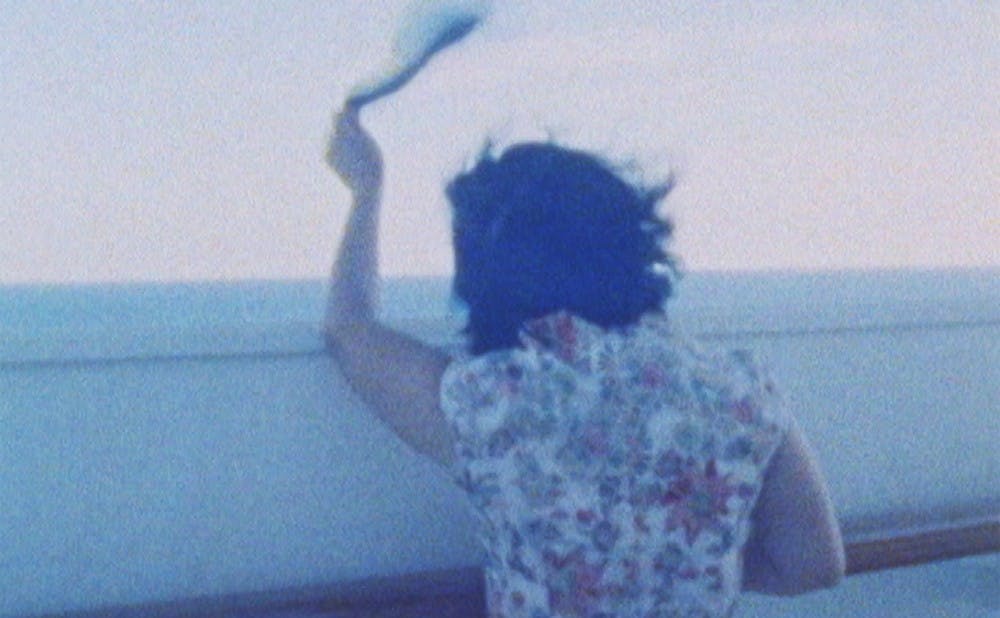A mixed media installation held in a food truck, a collection of photographs depicting the shrinkage of the United States Postal Service and a film connecting the rare earth elements to the influence of technology—these works and more will be featured at the MFA|EDA 2014 spring exhibition.
The exhibition will display projects from the 13 members of the Class of 2014. It is composed of 12 separate events between Mar. 21 and Apr. 18, each of which featuring one or several students’ works. The events are held in buildings on Duke’s campus as well as in theaters and art galleries around Durham.
“It’s a chance to share the culminated work of two years with a public audience,” said Tom Rankin, director of the MFA|EDA program. “[I’m looking for] work where an artist really understands their audience and is thinking about how best to speak to their audience.”
Teka Selman, Power Plant Gallery director, said the exhibition preparation process begins in the fall of the students’ second year, when they begin planning in earnest for their thesis work. She said she acts as a sounding board for students’ ideas, helping them find resources and develop approaches.
“I’m working at a specific time in their life where they’re beginning to [develop] projects for the first time, like the beginning of their careers, really,” Selman said. “It’s exciting to help them realize their ambitions.”
John Rash, a graduating student, agreed with Selman’s assessment. He noted that the exhibition marks the first time he has created a film for a large audience and the first time he has had an entire gallery space to himself.
“It really has taught me how to work on a larger scale and how to engage with a larger audience,” Rash said.
Rash’s exhibit features a film and gallery installation of photos and video pieces, both of which are about China. He said he was challenged by geographical distance from his subject as well as the procedure of editing.
“It was a sort of painful process, editing out some things I really loved to make way for what seems to be the stronger collection of material,” Rash said.
Caitlin Kelly, another graduating student, said she also had to cut down the number of photographs she took for her exhibit of women living with HIV. Additionally, she considered ways to change how her work would be viewed—she decided not to frame her images or encase them in glass because it gave them a greater ability to communicate their meanings.
“When you walk into a museum or gallery, and you are approaching a photograph with glass, there is often a specific distance from that photograph that you will take,” Kelly said. “Glass is a barrier. It says ‘Don’t touch. Don’t get near me.’ That idea of saying you should be x amount of feet or meters back, I don’t agree with.”
Rash said he wants his exhibit to foster discussion in his audience, a goal similar to Kelly’s.
“I would like [my audience] to have questions about what they thought HIV looked like, what it was supposed to be,” Kelly said. “These women…are all complex people. I would like my audience to walk away with a different perception.”
The exhibitions have drawn an audience of everyone from Duke faculty and administrators to members of the Durham and Triangle community, said Rankin.
“[Last Saturday’s premiere] was incredibly well-attended, with more people than could fit in the theater for the screening afterwards and a long line for the food truck,” Selman said. “The energy that’s been around the show this year has been so great.”
As for plans for his work after the exhibition, Rash said his film has been accepted to two film festivals, one in Durham and one in Seoul, Korea. He and Kelly both want to find galleries in which to display their photographic collections. They also would both like to teach at universities while continuing to work as artists.
Selman hopes that through the exhibition, students will learn about what mediums work best for them and how to introduce their works to the public, as well as discovering more of their own voice and artistic identity.
“There’s a way in which some folks have been able to embrace themselves as artists,” Selman said. “Being able to say, ‘I made this thing. I’m an artist. I can say something with this work and impact people.’ I hope they take that away—the power of their voices as artists.”
Events for the MFA|EDA 2014 spring exhibition will take place between Mar. 21 and Apr. 18. Detailed information on the program's schedule is available at mfaeda2014.org.
Get The Chronicle straight to your inbox
Signup for our weekly newsletter. Cancel at any time.

